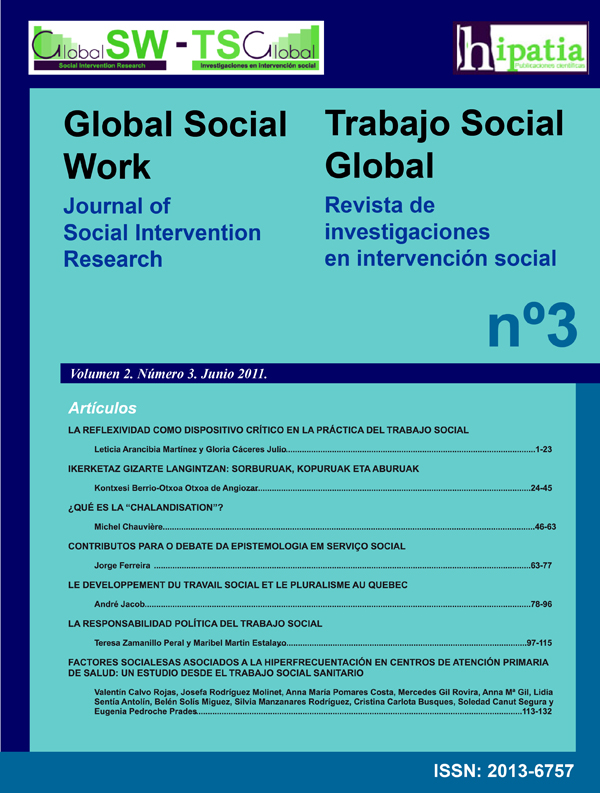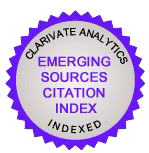Factores sociales asociados a la hiperfrecuentación en Centros de Atención Primaria de Salud: un estudio desde el Trabajo Social Sanitario
DOI:
https://doi.org/10.30827/tsg-gsw.v2i3.922Keywords:
PC.- Hiperfrecuentación, atención primaria de salud, características socio-familiares KW.- Frequent attenders, Primary Health Care Service, socio-familiar featuresAbstract
El objetivo de este trabajo es analizar si existen características de disfunción socio-familiar comunes a los hiperfrecuentadores, y diferentes a las de la población general, que puedan explicar la necesidad de acudir repetidamente a las consultas. Con dicha finalidad, se ha llevado a cabo un estudio de casos y controles transversal, en el Servicio de Atención Primaria (SAP) Esquerra de Barcelona. En concreto, mediante la realización de 162 entrevistas personales a 84 pacientes clasificados como hiperfrecuentadores entre el 1 de septiembre de 2007 y el 31 de agosto de 2008 (visitas CP y/o URG >= 18 (percentil 95 de la distribución de visitas CP y/o URG de los usuarios del SAP) y 78 como no hiperfrecuentadores se aparearon por edad y sexo. Se administraron cuatro cuestionarios: uno de datos sociodemográficos, el test APGAR familiar, las escalas de ansiedad y depresión de Goldberg y la escala de apoyo social funcional de Duke.
The objective of this article is to analyze if there exist socio-familiar features common to frequent attenders and different from those of the general population, with the aim to propose a appropriate intervention. In order to develop quantitative study based in an intervention group and a control group, and cross sectional study, in the Primary Health Care Service from a great urban area. Specifically, patients classed as frequent attenders between September 1, 2007 and August 31, 2008 (previous appointments and/or out-of-hours visits > = 18) (Percentile 95 of the distributions of previous appointments and/or out-of-hours visits of the PHCS users). Frequent attenders were joined by age and sex. By means of a personal interview they were administered four questionnaires to a patient’s representative sample: 1. Sociodemographic data index, 2. Family APGAR index, 3. Anxiety-depression Goldberg Scale, and 4. Duke-UNC Functional Questionnaire.
Downloads
Downloads
Published
How to Cite
Issue
Section
License
Authors publishing in this journal agree to the following terms:
- Authors retain their copyright. They guarantee to this journal the right to a first publication of the work submitted to initiate the editorial process.
- Authors know that their work is published under a Creative Commons License which allows others to share it, with a recognition of the work's authorship and its initial publication in this journal.
- Authors share with Global Social Work explotation rights of the work that has been published in this journal, authorizing the execution of a free reproduction, distribution and public communication. Authors know that their work will be stored on servers and reproduced in digital format for inclusion in institutional repositories and databases that will facilitates free access to the full text of the work.
- Authors may distribute the version of the work published in this journal (for example, to an institutional repository or publish it in a book), with the explicit acknowledgment of its initial publication in this journal.
Copyright on the texts published in Trabajo Social Global -Global Social Work, as well as editorial policy of the journal refering to self-file and deposit in institutional or thematic repositories, are identified in the database





















